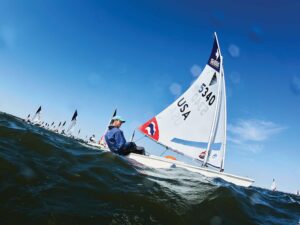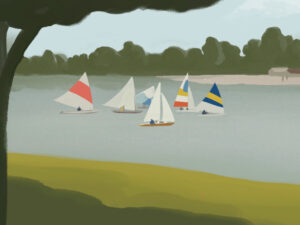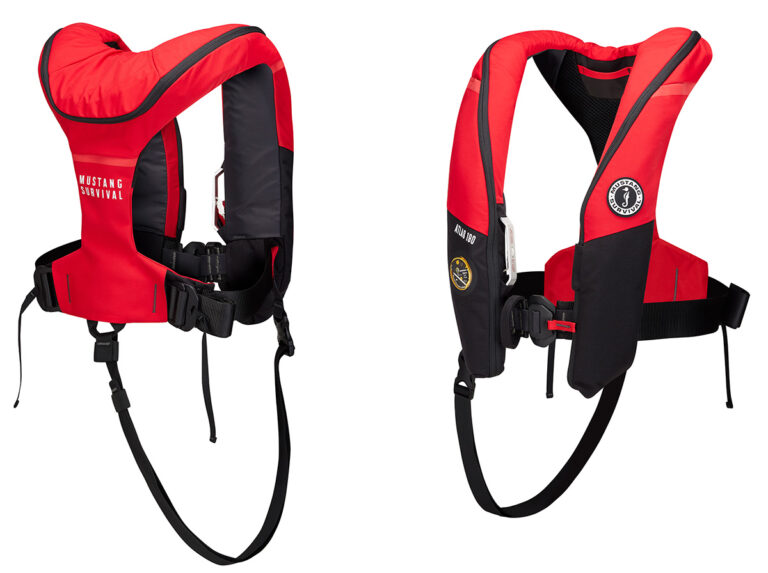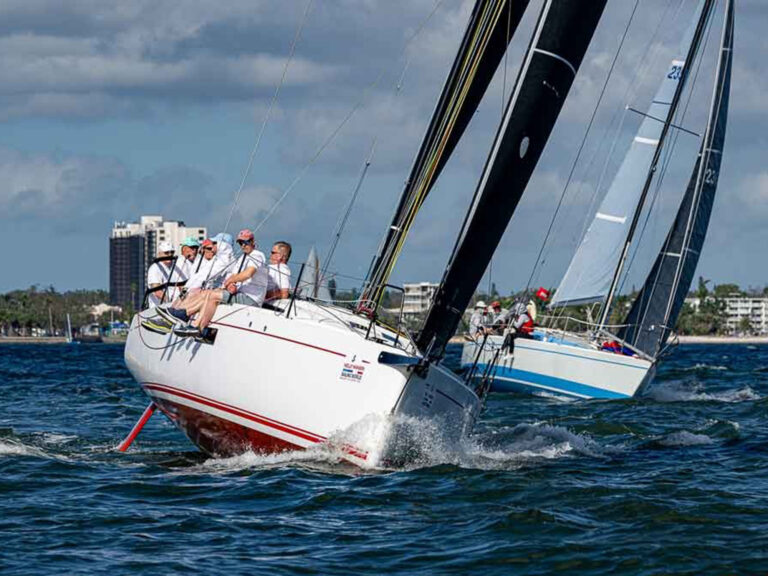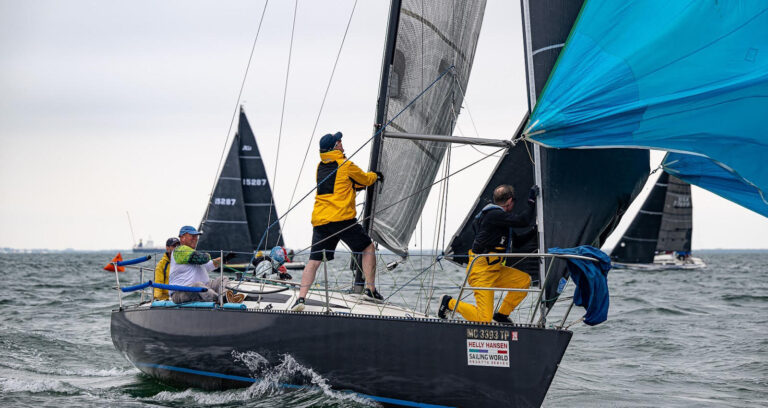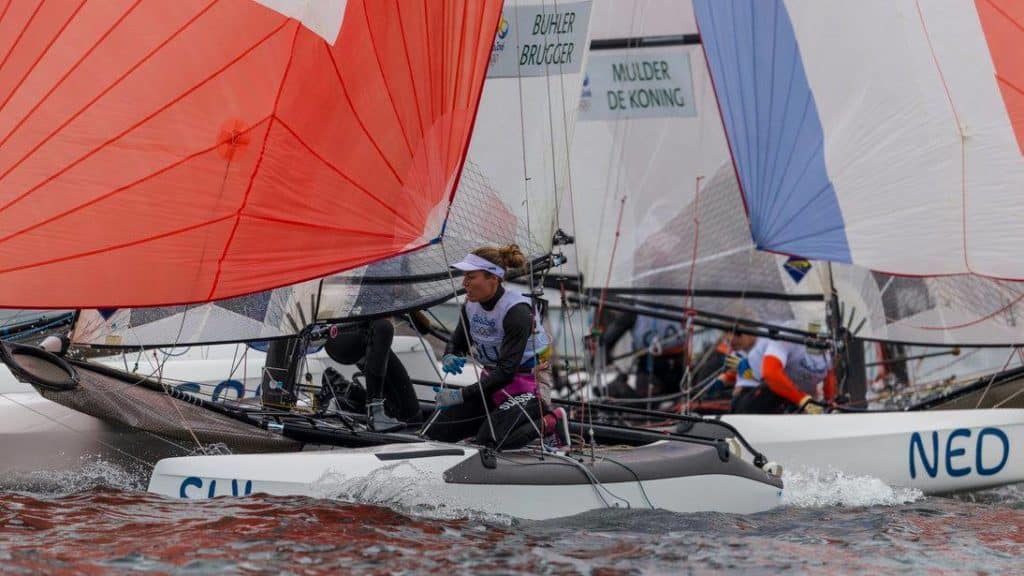
When the curtain closed on the 2012 London Olympics, Swiss Laser Radial sailor Nathalie Brugger was about to throw in the towel. She finished 14th overall, a disappointing step down from her 6th place finish in Beijing. Tired of the Radial and ready to retire, her motivation for Olympic sailing was renewed when she discovered the speed challenge that is the Nacra 17 catamaran. She stepped into the unknown and made the transition from dinghy to multihull.
Another Swiss team member, Matias Buhler was coaching sailor Richard Stauffacher in the RS:X in London. An accomplished sailor himself, when the mixed discipline was announced for 2106, Buhler and Brugger teamed up immediately. “We’re both not catamaran sailors so we had to re-learn every skill,” says Brugger.
For Brugger, the high-speed catamaran was just the spark she needed to reignite her sailing passion. “The technique is completely different than the laser,” she says. The challenge of the speed and quick decision-making brought new elements into her sailing career that she hadn’t experienced before.
Brugger’s biography on her team website claims she is the most successful and experienced female sailor in Switzerland, with championship titles dating back to 2000, but almost all of her experience was in singlehanded sailing. Her biggest adjustment, she says, was learning how to sail with another person on board. Communication was a key part of their training. “We think completely differently and speak completely differently,” says Brugger. “It was like learning a new language.”
Trapezing was also a steep learning curve for the pair; while Buhler had coached 470s, he had not mastered the technique himself. “Coaching and doing are two completely different things,” he says.
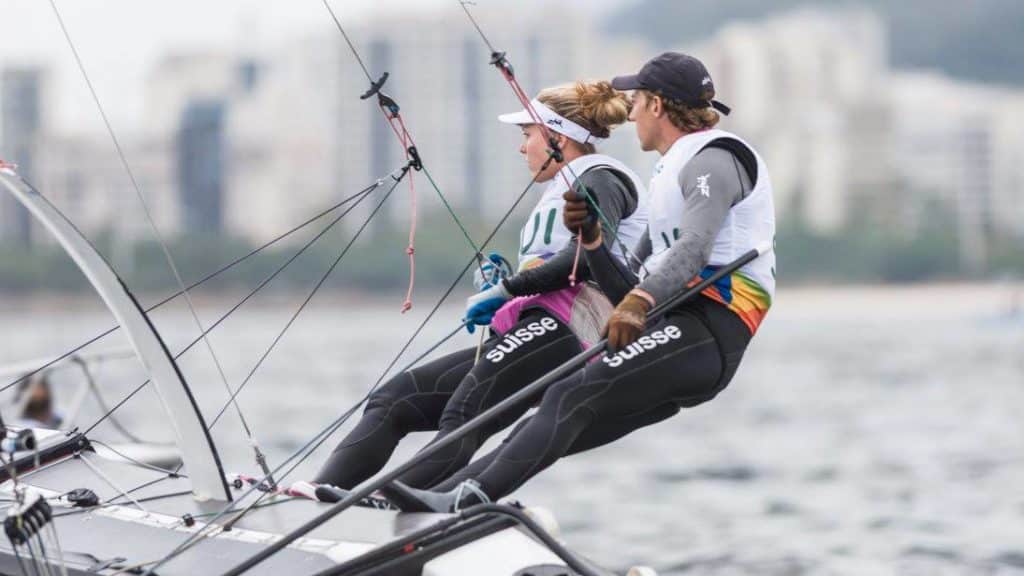
The team embraces the less stable platform the Nacra provides, and the high speeds they can reach when the breeze is up. “It’s the future of sailing,” says Brugger. “It’s exciting to be a part of it, to learn something completely new and different. This is the best way to finish my Olympic career on a high note.”
In the first ever Nacra 17 Olympic Race, Buhler and Brugger certainly did enter at a peak. They came out of the first beat with a slight lead on the fleet, were back in the pack more than once, and while their Singaporean competition, Justin Liu and Denise Lim, caught them in a dying breeze on the final downwind leg, the Swiss came out on top in a photo-finish for first. “We know that this is just the start of the regatta,” says Buhler. “We’re satisfied with the start but we will have our mind on the coming days.”
The Nacras were slated to race on the Copacanaba course today, but they’ve been moved to Ponte because of the building breeze which will provide the speed and challenge that Brugger and Buhler have embraced as multihull converts. Racing starts at 1300 local time.
The RS:X fleets have also been moved to an inside course, Escola Naval, for the same reason.The men and women’s 470 will hold their third and fourth races today on the Niteroi course, further outside the bay than their circle yesterday in hopes of providing more steady conditions to the fleet.
The Lasers and Radials are enjoying a reserve day. American sailor Paige Railey says she’ll enjoy some downtime to relax and get her body ready for the final two days of preliminary racing.
Live tracking is available for all races at sailing.org.

